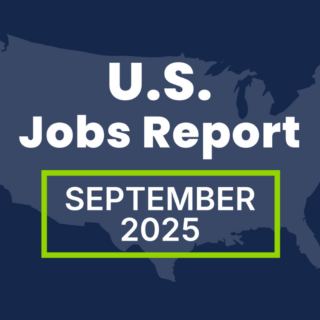Retaining healthcare staff and medical staffing are more important than ever. The lifeblood of a healthy healthcare organization is a happy and well-engaged staff, from food service and facility maintenance employees to clinical professionals like physicians and nurses. To ensure a happy healthcare workforce, medical staffing, employee engagement and retention need to be top priorities of healthcare HR professionals.
Unfortunately, many healthcare organizations lack concrete plans or programs for healthcare talent management, or the programs they have in place are antiquated and in need of updating. In this post, we educate healthcare HR professionals on ways to improve medical staffing by better engaging and retaining employees.
Why Engagement and Retention is Important for Medical Staffing

Healthcare employee turnover is high, according to a Leaders for Today (LPT) survey report, which included 852 participants of both clinical and non-clinical healthcare workers. The survey found that 43 percent of respondents reported they have been with their current organization for fewer than two years and 65.7 percent reported they have been with their hospital for fewer than five years. More than one-third of LPT survey respondents plan to leave their current organization within two years, and 68.6 percent plan to leave in five years.
Dig Deeper
How RPO Can Solve The Top Challenges In Healthcare Talent Acquisition
What’s more, the financial costs of high turnover can be significant for healthcare organizations. The turnover of a physician represents a $200,000 loss for a healthcare organization, according to a 2016 report from B.E. Smith, while the loss of a bedside nurse can cost up to $56,300 annually according to NSI Nursing Solution’s report. By better engaging employees, healthcare organizations will not only raise morale and lower employee turnover, but they will also improve their bottom line.
Four Key Areas of Medical Staffing and Employee Engagement
Developing an effective medical staffing strategy is a challenge, especially with the healthcare industry experiencing a shortage of medical professionals. Healthcare workforce planning can help resolve some medical staffing issues. However, organizations also need to factor in the following areas to ensure strong employee engagement and retention:
- Onboarding new employees: Involves training, educating and getting new employees comfortably situated in their new position.
- Engaging employees: Involves managing and developing employees to become more engaged with the organization.
- Retaining employees: Involves expanding responsibilities of employees as well as offering incentives to stay with an organization.
Medical Staffing Basics: Onboarding New Healthcare Employees
Making sure new hires are comfortable, connected and productive as soon as possible is essential for the success of a comprehensive medical staffing program. New hires need to know how they fit into an organization and understand how their roles support the healthcare organization’s goals. When a healthcare organization takes the time to cultivate relationships with new hires, those employees feel like part of the team from day one and are more likely to stay in their positions.
Having a strong support structure is vital for new hires, managers should work to create a support network for their new hires in their departments to help them get up to speed as soon as possible. Managers should also be as available as possible to answer questions and provide feedback to new hires.
Instead of waiting for new hires to introduce themselves to their new co-workers, healthcare HR professionals should actively introduce new hires to their teams before their start date. This can be done with email notifications or a brief in-person meeting. Veteran employees should also conduct regular follow-ups with new hires once they have started to make sure they are acclimating well to their new environment.
Additional on-boarding suggestions:
- Appoint point persons and mentors to welcome and orient new hires for the first 90-days of employment.
- Before a new hire’s start date, send him/her a card or letter welcoming them to the organization and include important paperwork, employee handbook and benefits package along with an agenda letting them know what to expect on their first day.
- Make sure the employee’s work area is ready.
- Create lunch plans for new hire’s first few days, helping her/him feel at ease and welcome. This can also can serve as a way to introduce them to the team.
- Promptly educate new hires on the healthcare organization’s culture and unwritten rules. For example, what is the preferred method of communication – email, phone, chat programs or in-person meetings?
Successfully onboarding employees can be one of the most effective weapons in a healthcare organization’s arsenal. Studies have illustrated that well-designed onboarding programs can quickly transform new hires into dedicated employees, reducing the costs associated with turnover and improving overall employee morale.
Engaging Healthcare Employees
Employee engagement is one of the most important elements of successful medical staffing. Highly engaged employees often have persistent feelings of work fulfillment. This work fulfillment can often translate into increased enthusiasm and passion in employees, resulting in higher than average levels of focus and energy put into their jobs.
Employee engagement has become more important to healthcare HR professionals because there is growing evidence that employee engagement correlates to positive outcomes for individual, group and organizational performance in the areas of productivity, retention, turnover, patient care and loyalty. Here are a few practices healthcare organizations can do to better engage employees.
Professional development: For healthcare professionals—especially clinical employees—the opportunity to learn and grow professionally is very important. To better engage employees, healthcare organizations should look to create a positive learning environment for employees who seek additional skills and professional experiences. Learning opportunities can pay long-term dividends, the skills and new experiences gained by employees through education and training can be utilized to improve performance in their current position, or they can transition into vacant positions, lessening the need for hiring new personnel.
Offer better work-life balance
Healthcare workers experience the same challenges in their personal lives as employees in other industries, they are trying to balance childcare, school schedules and needing time away from work. Adding some freedom to an employee’s daily, weekly or monthly schedule is often seen as a big plus for employees and can be more important than compensation in some cases.
Working relationships and mentorship
Strong bonds and relationships between team members are important for professional growth. Veteran employees who have been with an organization for years have a lot of experience, knowledge and advice to impart to younger and less experienced employees looking for career guidance. To build better employee engagement, healthcare organizations should create a formal mentoring program. Healthcare organizations can ask seasoned employees to guide younger ones in their careers to help engage both the mentor and mentee, giving a sense of purpose and direction to both parties.
Additional employee engagement suggestions:
- Make staff meetings a time to celebrate successes and highlight individual achievements.
- Have managers involve employees in determining their career path goals and development plan.
- Promote values such as integrity, empowerment, perseverance, equality, discipline and accountability into the organization.
- Let employees know they matter and make a difference within the organization.
- Give employees responsibilities and new challenges.
- Give employees thank you cards for going the extra mile.
- Implement employee suggestions and ideas to show you care and value their input.
- Create opportunities for employees to become a “leader” in something they are interested in and knowledgeable about.
- Ask employees work-appropriate questions about their family life, hobbies and interests.
- Always provide staff the care, tools and resources needed to be successful in their position.
By better engaging employees, medical staffing efforts will see reduced turnover and higher levels of job satisfaction among employees. Remember, managers are key in engaging employees and must pay attention to staff needs to help create a positive working environment.
Medical Staffing Retaining Healthcare Employees
Employee retention is certainly one of the most important ingredients for success for healthcare organizations. Improving employee retention allows organizations to avoid the high cost associated with replacing employees, improves patient care and enhancing the overall quality of service to the communities served. Below are a few ways healthcare organizations can improve their employee retention efforts.
Offer flexible scheduling: Scheduling can be a rather difficult part of medical staffing. A healthcare workers’ schedule can be exhausting, as they often have to work long and unpredictable hours. To better retain employees, healthcare organizations should consider offering a wide array of scheduling options. Employees will appreciate an organization’s attempts to accommodate their personal lives and needs, and in turn, become more loyal to an organization as a result. Employees who have more control of their schedules tend to feel more job satisfaction and often stay with an organization longer.
Remove frustrating obstacles: Many employees may truly love their jobs, but due to obstacles and unnecessary challenges associated with performing their duties, they become burned out. For instance, nurses might get inundated with never-ending paperwork. This may result in nurses feeling unsatisfied with their work. A solution to this challenge could be to implement a new technology to streamline the paperwork process. Without an overload, nurses will most likely feel greater satisfaction because their workload is more balanced between administrative and clinical work.
Conduct stay interviews: Interviewing employees is often reserved for before hiring or after an employee resigns their position. Stay interviews should be conducted at least once a year with employees on a one-on-one basis in a neutral setting. Employees should be asked questions about their frustrations and issues and about ideas on how improvements can be made for them.
Questions to include in stay interviews:
- What about your job makes you eager to get to work?
- What makes you want to hit the snooze button instead of coming to work?
- If you were to leave the organization, what would you miss the most?
- What would be the one thing, if it changed in your current position, would make you consider leaving?
- What would be the one thing you would change about your department if you could?
Employees who are treated well will often feel a sense of obligation or duty to their organization. As a healthcare employer, each action an organization takes to improve employee job satisfaction, morale and productivity is a step towards improving retention and improving medical staffing outcomes.
Conclusion
For healthcare organizations, medical staffing is only as successful as their ability to engage and retain the best healthcare professionals. To achieve this end, organizations must be consistently vigilant of their employees’ needs and must develop talent carefully to keep employees engaged and committed to their job.




